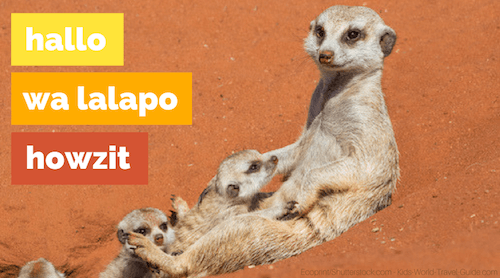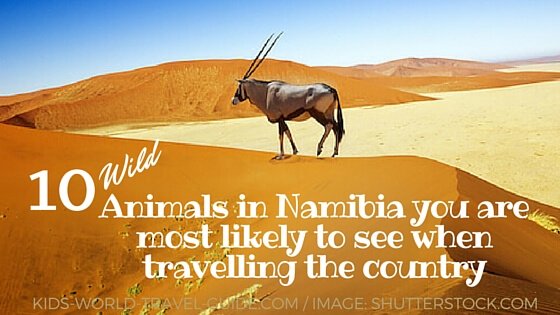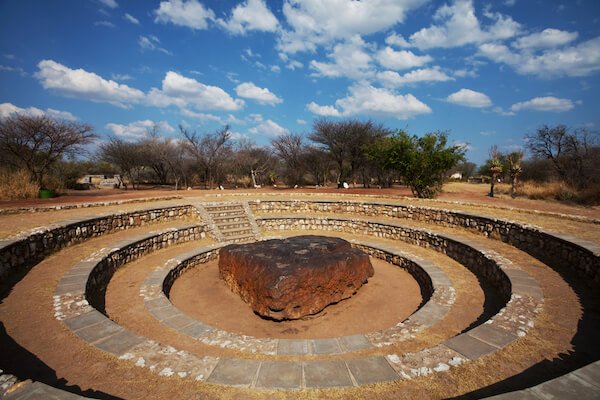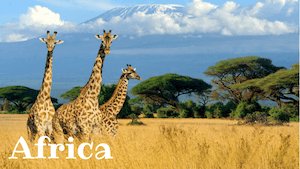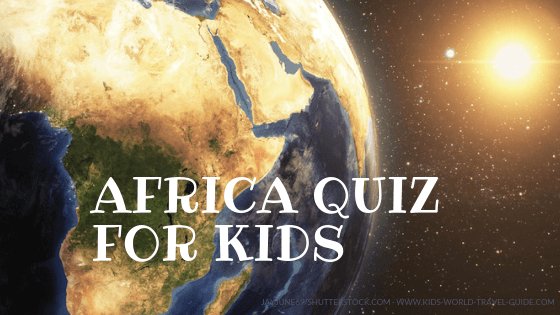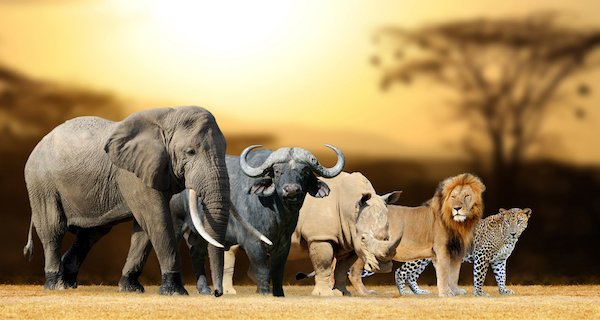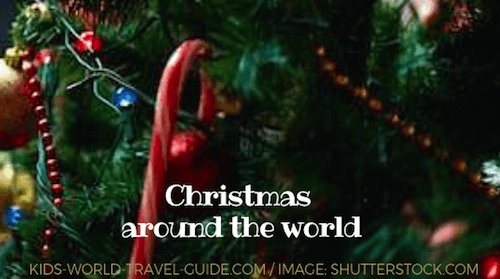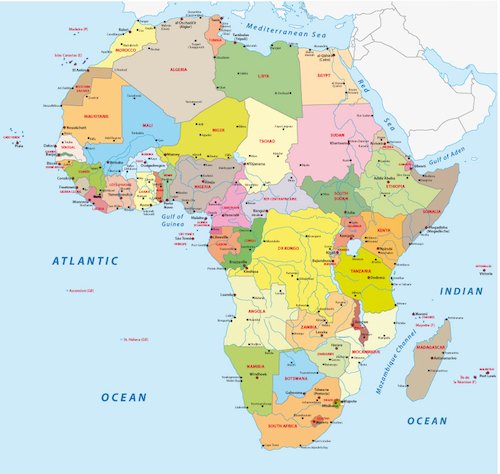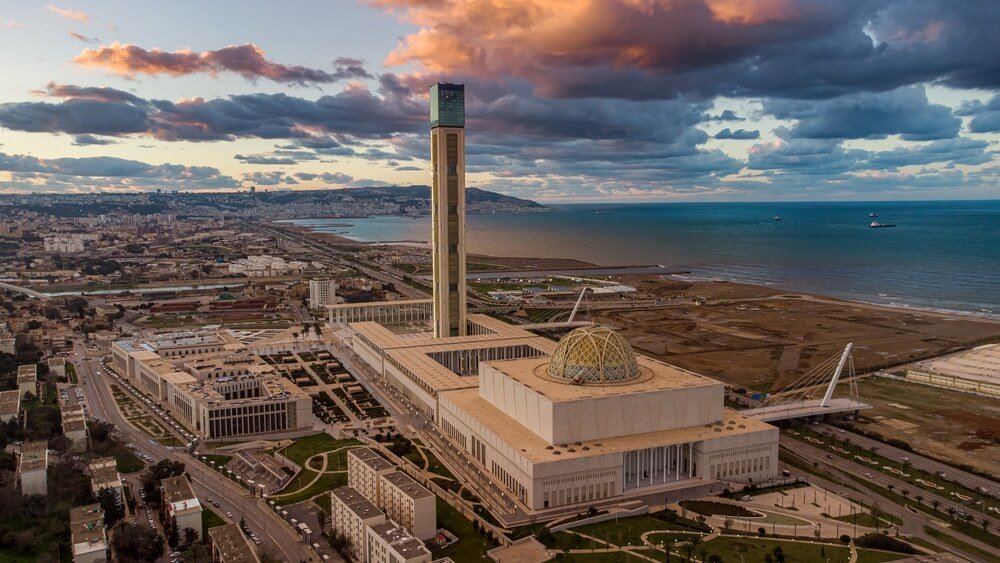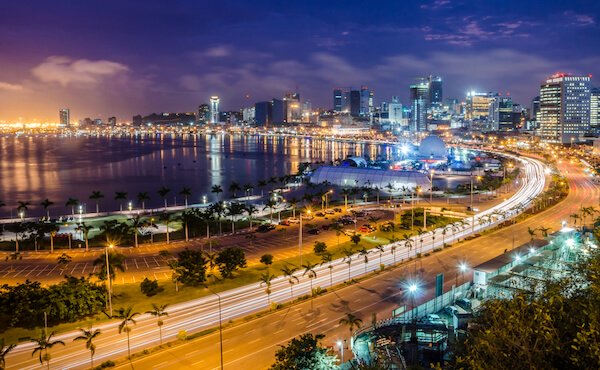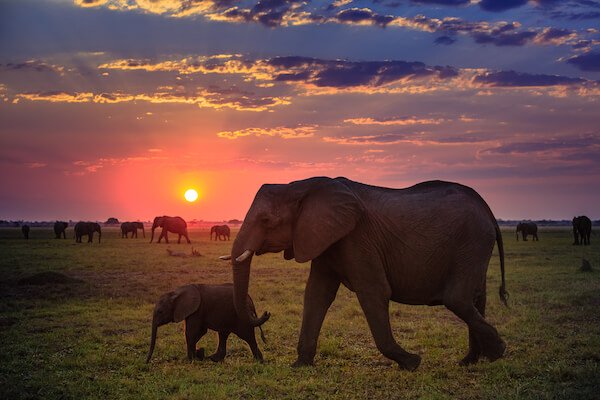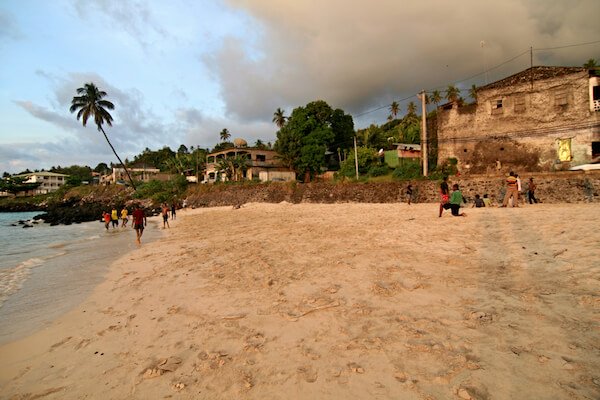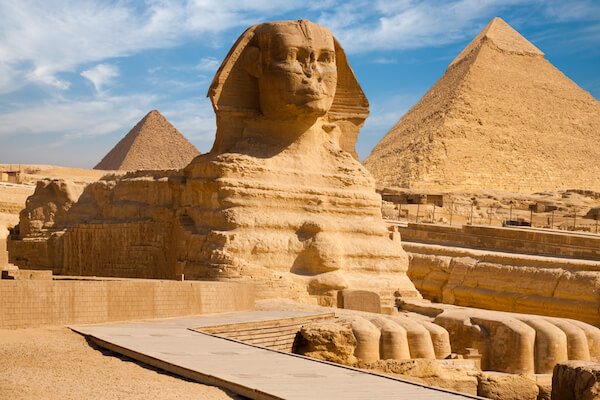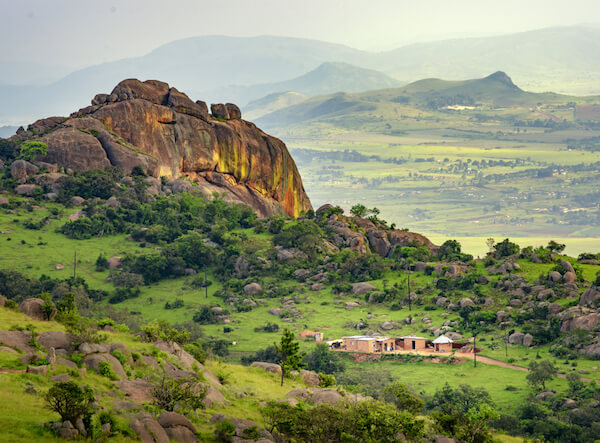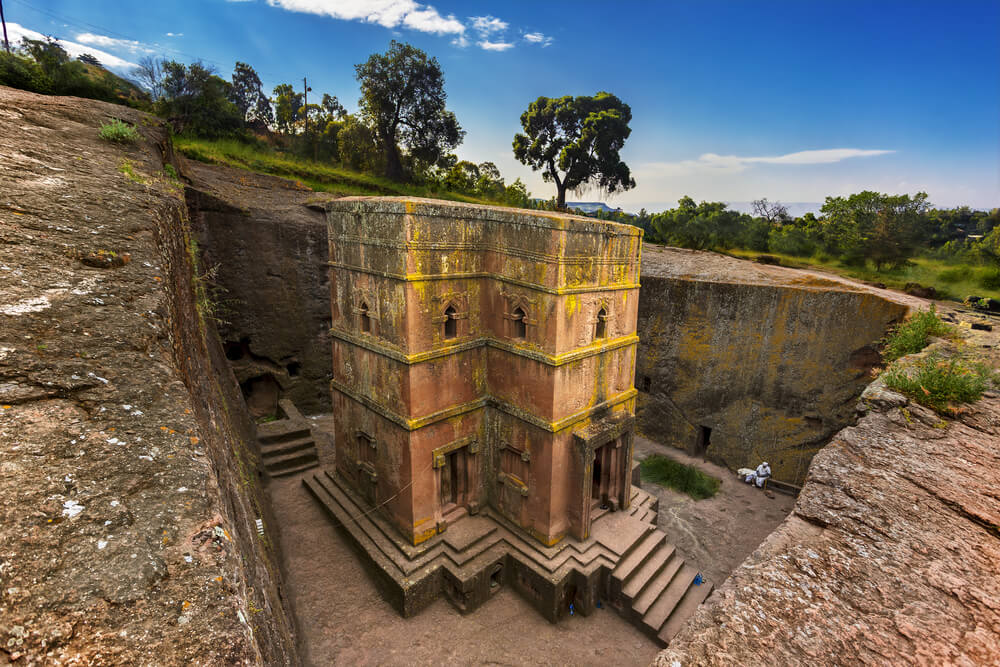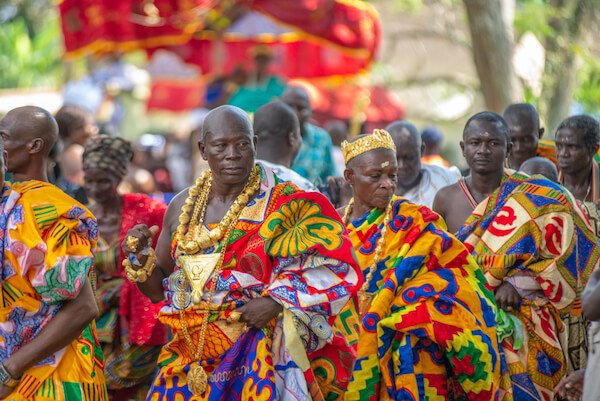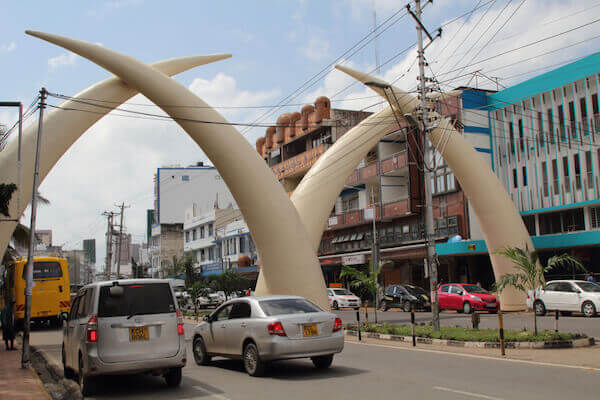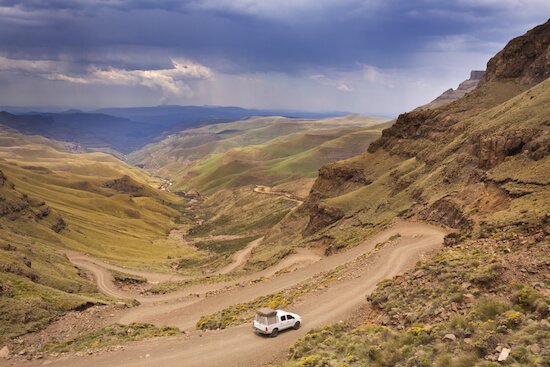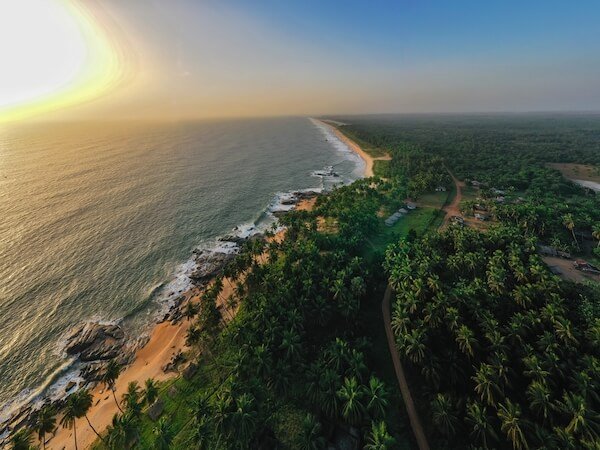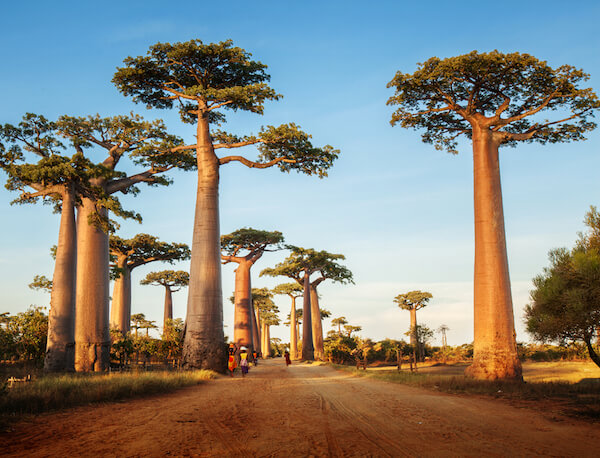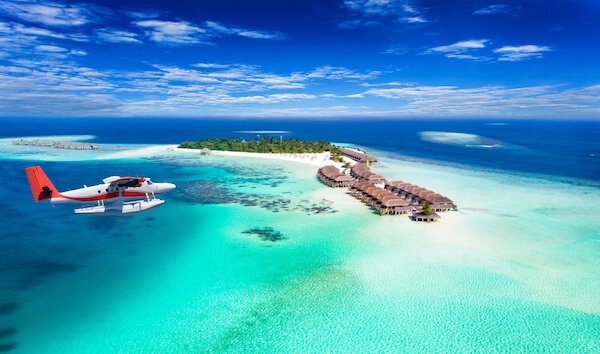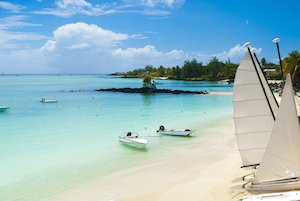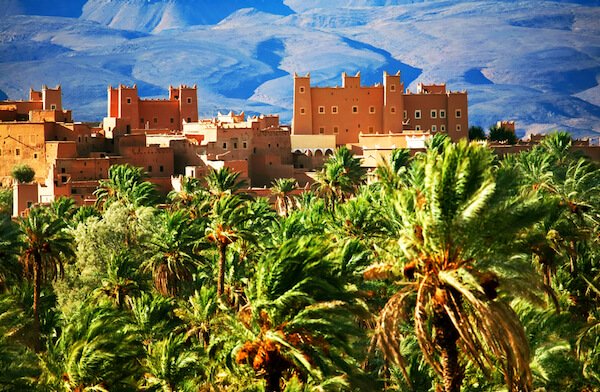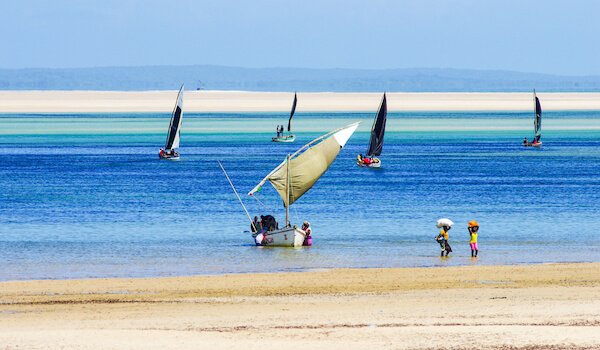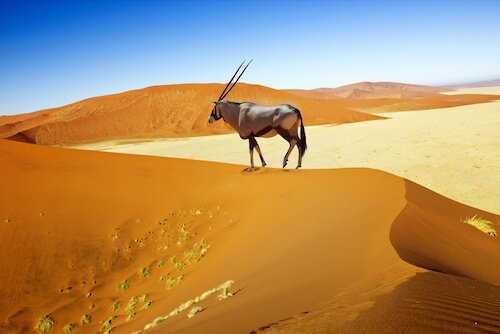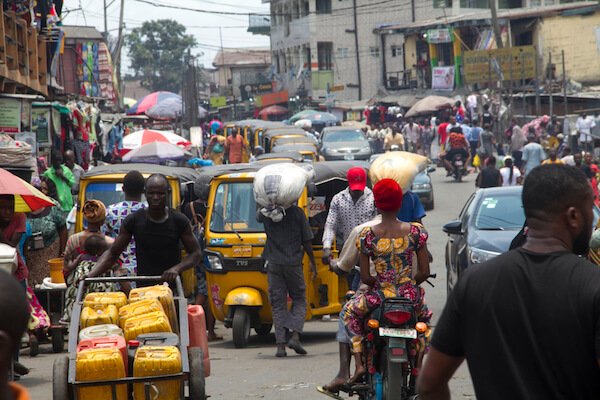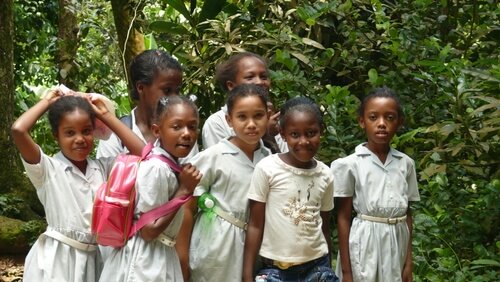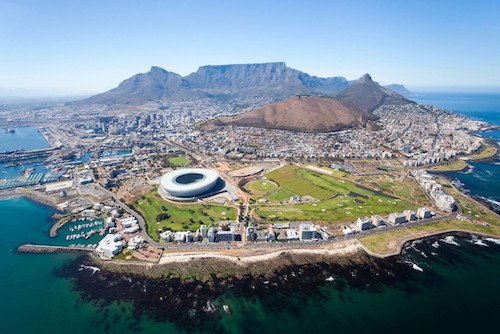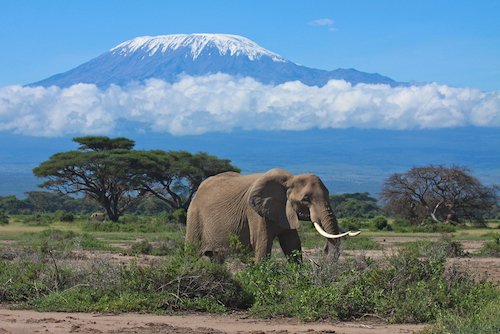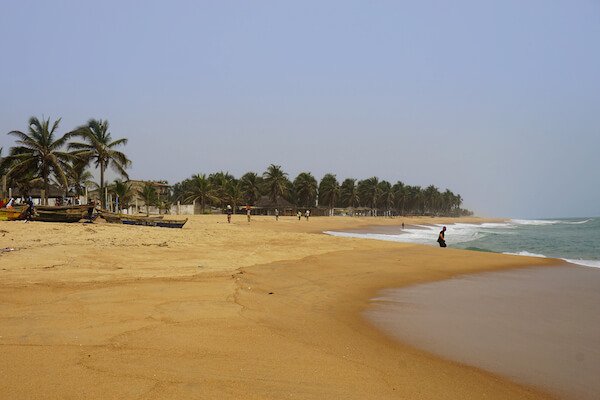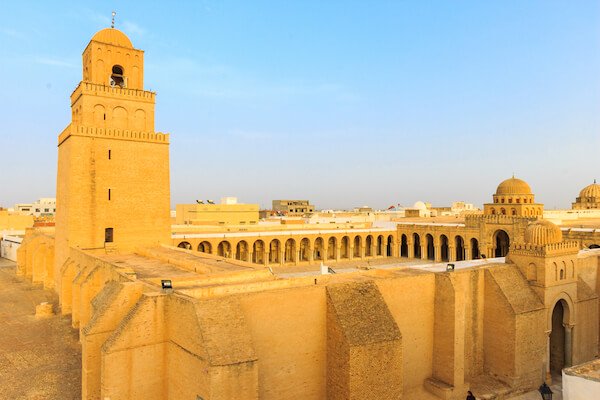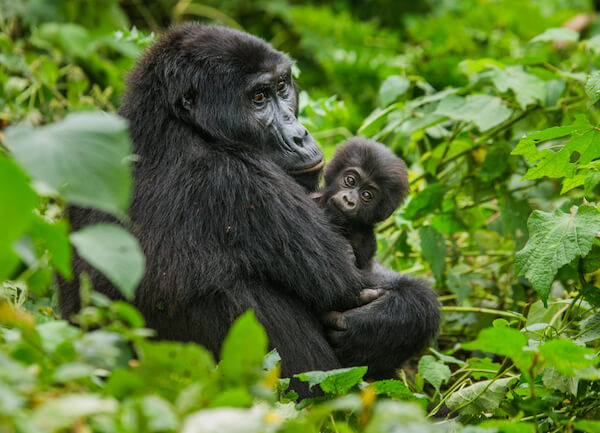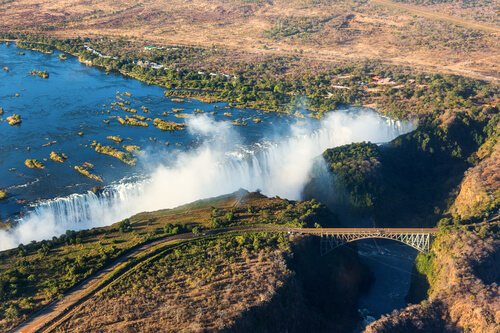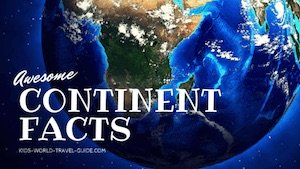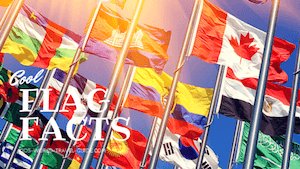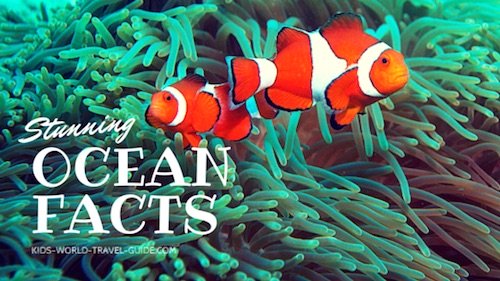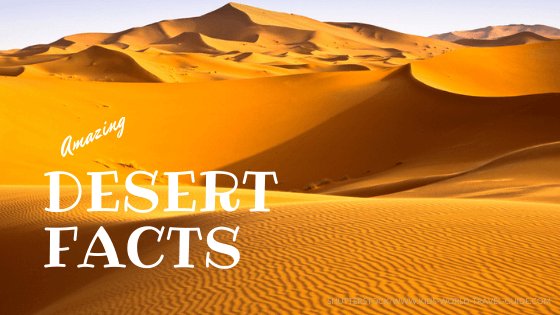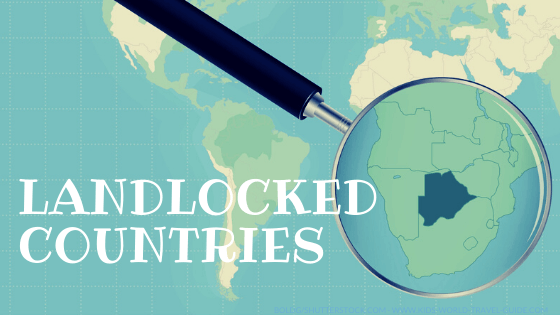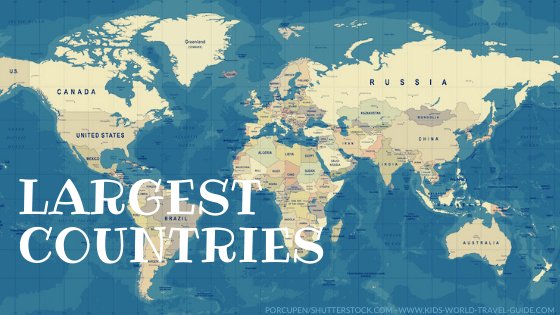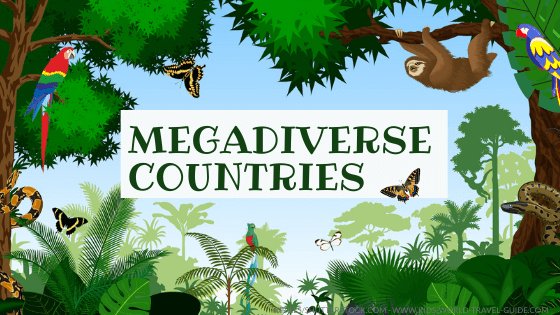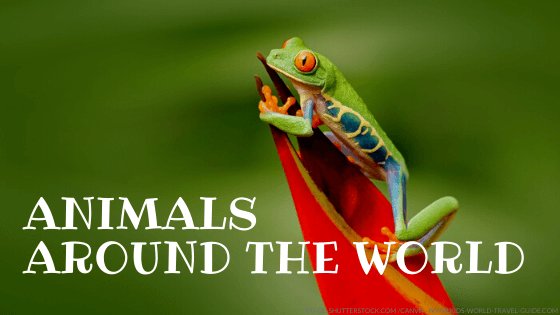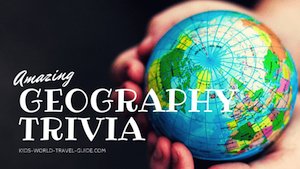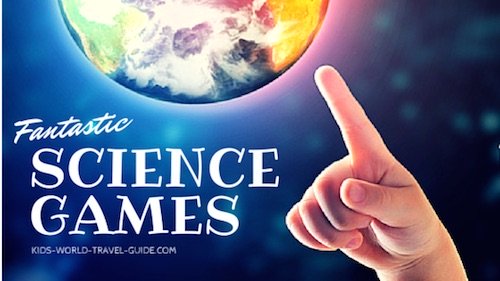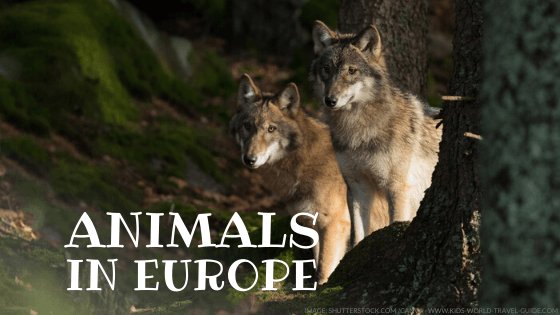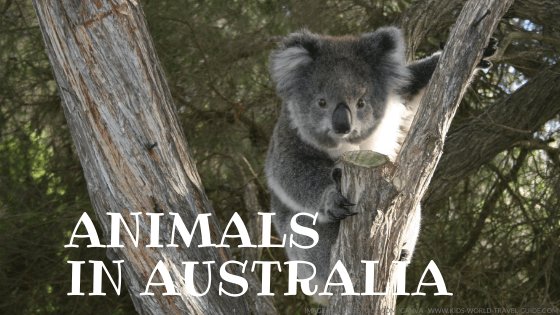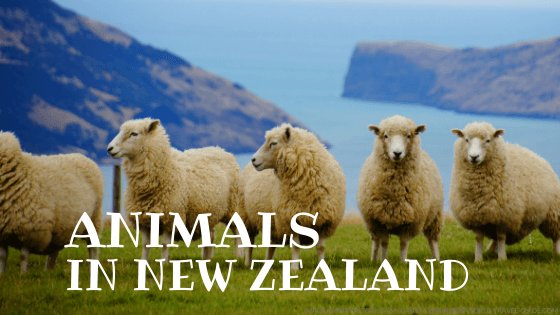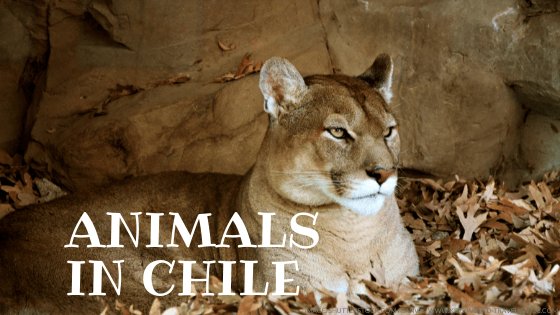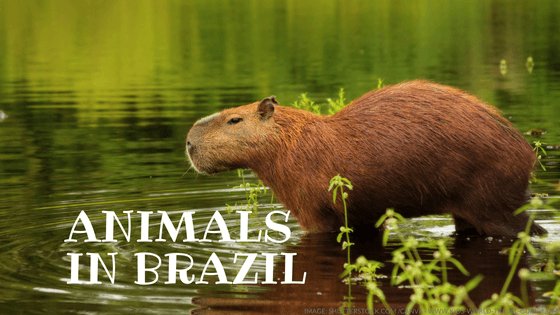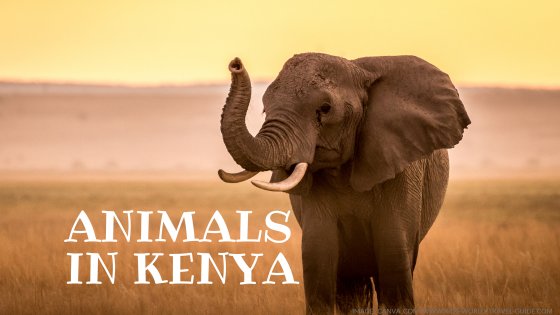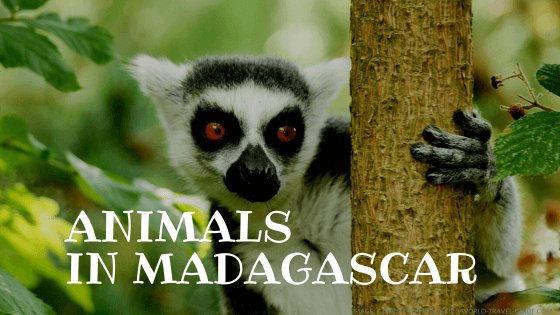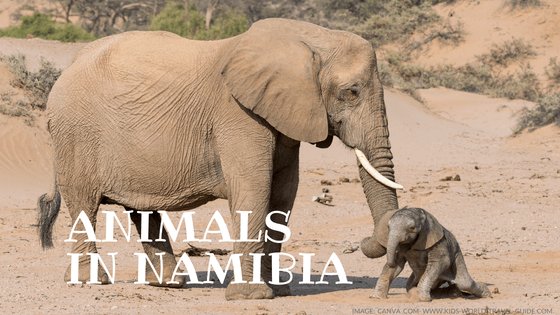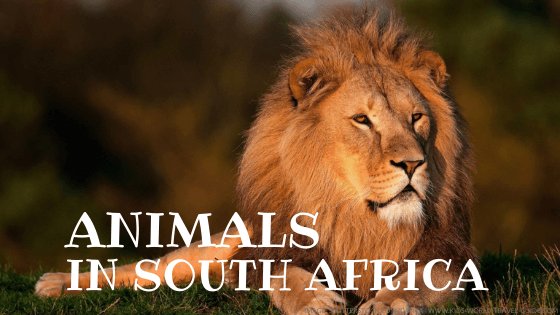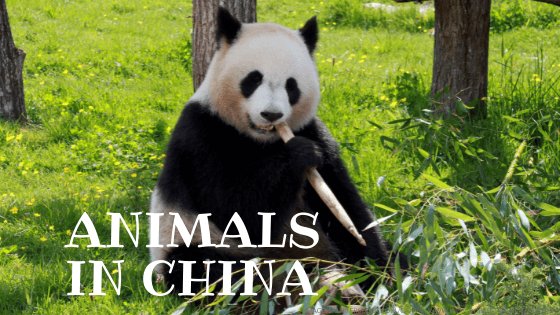Facts about Namibia
These facts about Namibia were chosen and researched to provide more insights into this beautiful country and tell you some amazing facts and superlatives you most probably never heard of.
Interesting Facts about Namibia
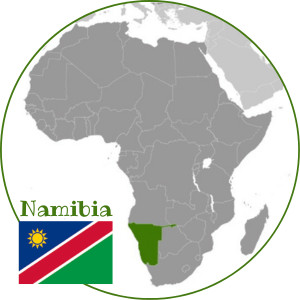
Namibia is a country in southern Africa that borders the Atlantic Ocean. Namibia shares land borders with Angola to the north, with Zambia and Botswana to the east and with South Africa to the south and south east.
The large country is the second least densely populated country in the world - after Mongolia. With a population of just over 2 million inhabitants living on an area twice the size of California/ USA, the country has vast areas dominated by deserts and bushland.
Namibia for Kids: Namibia is roughly half the size of Alaska or double the size of California!
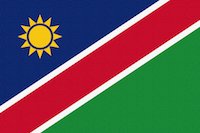
Facts about Namibia - At a Glance
Interesting Name Facts about Namibia
The country’s name Namibia originates from the desert which is known as the Namib desert - the oldest desert in the world.
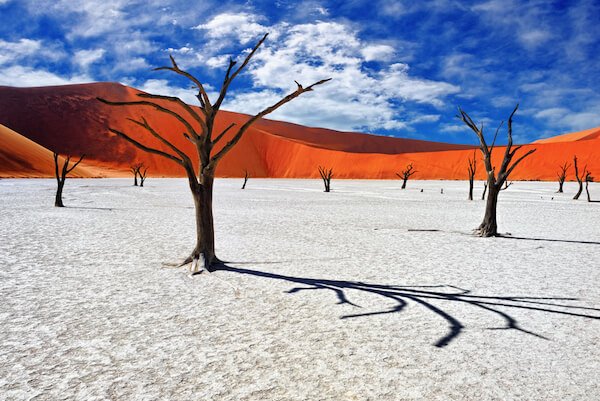 Namib Desert
Namib Desert- Namibian activist and politician Mburumba Kerina (1932-2021) named the country "Republic of Namib" which then became "Namibia" or "Republic of Namibia".
- The country also was known as German South-West Africa or in German 'Südwestafrika'. From 1884 - 1915 it was a colony of the German Empire.
- Then the country was renamed into South West Africa in 1915 as during the First World War (1914 - 1918) the country was invaded by its neighbouring country South Africa and also was made South Africa’s fifth province in 1949. The country which during the first World War had been put under the League of Nations mandate and then after the Second World War under United Nations supervisory role, was nevertheless controlled by the apartheid regime of South Africa until the country’s independence in 1990
- Since 1990, the country is referred to as Republic of Namibia
The Namib Desert and the Welwitschia
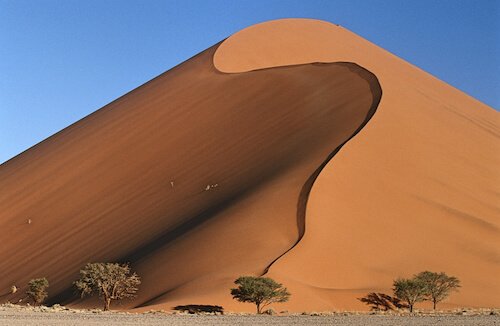 Namibia Desert Dunes
Namibia Desert DunesThe oldest desert in the world is the Namib desert. The Namib is a coastal desert with huge dunes along the Atlantic Ocean and thus stretching along of the western part of Namibia. The name gives it away, 'namib' means vast place and a vast place it is!
One of the oldest living plants lives in the Namib desert. This plant can grow over 1,000 years old and is called Welwitschia. This plant is referred to as a living fossil.
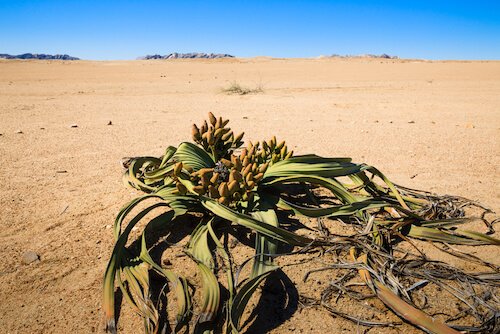 Welwitschia in Namibia
Welwitschia in NamibiaThe Welwitschia can grow with the little water from the night’s dew or coastal fog and soaks up the water droplets with its two foliage leaves that can grow over 4 m/ 13 ft. in length.
The name of this plant is Welwitchia mirabilis, the "wonderful Welwitchia"!
Namibia Fun Fact: Did you know that the Namibian rugby team’s nickname is "Welwitchias"?
The Fish River Canyon
Namibia’s Fish River Canyon is the largest canyon in the southern hemisphere and the second largest canyon in the world - after the Grand Canyon in the USA.
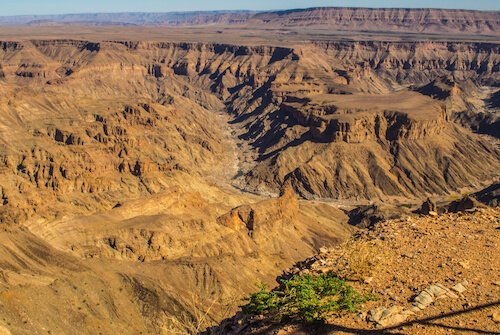 Fish River Canyon in Namibia
Fish River Canyon in NamibiaFish River Canyon is popular for its superb hiking and is the second biggest tourist attraction in the country.
The 85 km/ 53 miles hike along the gorge, takes 4 - 5 days and is really only for the very fit. There are only two exit routes from the gorge and hikers have to carry everything with them, as there are no facilities in the canyon.
The Fish River canyon is 160 km/ 99 miles long, 27 km/ 17 miles wide and at its deepest point 550 m/ 1,800 ft deep.
Abundant Wildlife in Etosha
One of the most popular attractions on the African continent and the most popular tourist attraction in Namibia is the Etosha National Park in the north of the country.
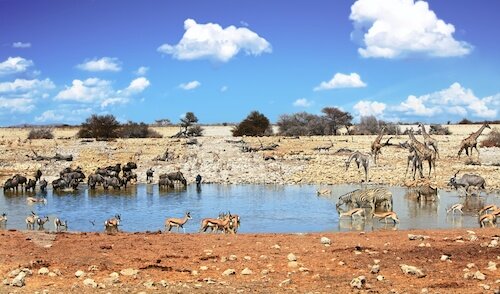 Waterhole in Etosha National Park - image by Paula French
Waterhole in Etosha National Park - image by Paula FrenchEvery second tourist to Namibia visits this part of the country to view game and birdlife at this national park. Etosha is famous for its large salt pan that can be seen from space! Actually, the word "etosha" means "great white place" in the Ovambo language.
The Etosha pan formed about 100 million years ago and and covers large parts of the national park. In Etosha wildlife is abundant and animals can be seen around the many waterholes.
Elephants, giraffes, antelopes and lions can be spotted there and also the rarer black rhinos and leopards. More than 340 bird species live in the park.
Facts about Namibia: Diamonds galore!
Namibia has the largest deposits of marine diamonds in the world. A new diamond rush will make Namibia’s coastline the centre of exploitation. Diamonds are said to be "scattered in the seabed just like lost change".
Mining companies extract diamonds with huge vacuum hoses from the sea floor in a depth of around 100 m/ 328 ft below sea level. Only about 3% of the Namibian seafloor has been explored so far.
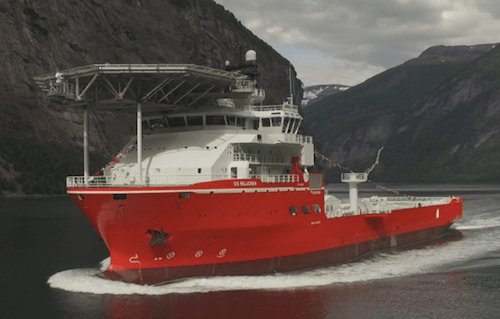 SS Nujoma - the world's biggest diamond exploration ship - image by De Beers UK Ltd.
SS Nujoma - the world's biggest diamond exploration ship - image by De Beers UK Ltd.DeBeers, the largest diamond producer in the world, launched the world’s biggest diamond exploration ship in 2017. This vessel harvests more than 1.2 million carats of diamonds every year! Another vessel by Debmarine with more advanced technology adds over 500,000 carats per year.
Most diamonds found are in sizes from 1 carat up to 2 carats. A diamond of 1 carat costs from 2,500 US$ to 18,000 US$ depending on quality!
Namibia has extracted already about 100 million carats of diamonds since the first diamonds were found in 1908. The country still houses diamond deposits of over 80 million carats!
Dragon's Breath Cave underground lake
Facts about Namibia: The largest underground lake in the world can be found in Namibia. The entry to the lake is through Dragon’s Breath Cave near Grootfontein in northern Namibia.
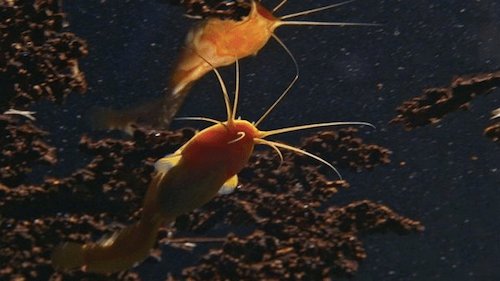 Golden Catfish in Dragon's Breath Cave - image from Wikicommons
Golden Catfish in Dragon's Breath Cave - image from WikicommonsThe lake is around 100 m/ 330 ft beneath the ground and only rarely climbers and divers explore the cave as the access to the underground lake is difficult. Only White Shrimps and worms live in the crystal-clear water of the lake and Golden Cave Catfish which only live here.
Orange River Vineyards
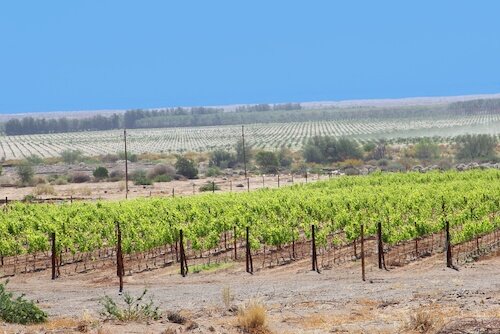 Desert Grapes - Vineyard in southern Namibia
Desert Grapes - Vineyard in southern NamibiaLast but not least of our facts about Namibia: The southern African country is also know for the largest harvest of table grapes and one of the biggest wine growing areas in the southern hemisphere. The climate in the region along the Orange River in the south of the country is ideal for growing grapes. The dry desert climate is good for the vines as it rarely rains and the climate is hot so less pests can survive the heat and destroy the plants. However, the heat and dust is hard for the farmers and helpers working in the vineyards.
More Interesting Facts about Namibia
More about Africa
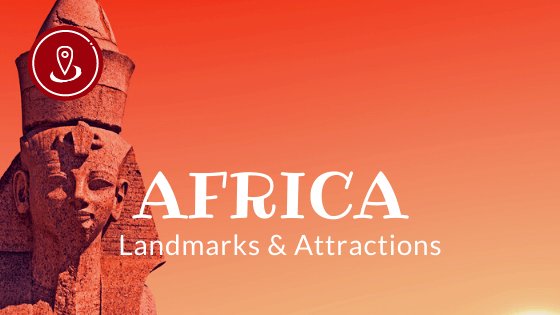 Landmarks in Africa Landmarks in Africa |
All about Christmas
Facts about Namibia: References
- Darren Wood. Namibia - A Roadtrip 2017. Youtube Video. See this video as an introduction to Namibia. First retrieved 26.09.2017. Last accessed 16 October 2024
- Paganel Studio. Namibia 2016. Youtube Namibia video with amazing landscape views, animals (and their babies), cultural traditions of the himba and San people and awesome desert images. With aerial shots to understand the country’s vastness and uniqueness. First retrieved 26.09.2017. Last accessed 16 October 2024
- Etosha National Park. General Info. Etosha National Park.org. Last accessed 16 October 2024
- Kevin Sief. A New Frontier for Diamond Mining. Washington Post. Posted 1 July 2017. Last accessed 16 October 2024.
Image Credits: own and shutterstock.com
Africa Facts
Did you like what you read?

|
Would you like a link to share the information with your friends, fans and readers? Simply use this: <a href="https://www.kids-world-travel-guide.com/facts-about-namibia.html">Kids World Travel Guide: Facts about Namibia</a> |
